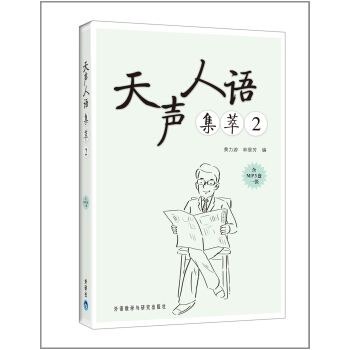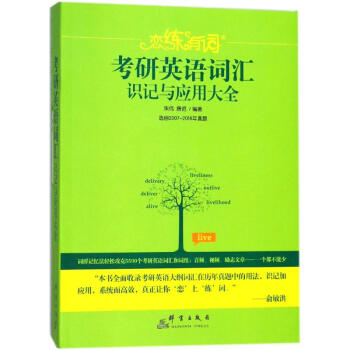![牛津英文经典:变形记(英文版) [The Metamorphosis and Other Stories]](https://pic.tinynews.org/11886751/56dfebd0Ne5ddab3d.jpg)

具体描述
编辑推荐
牛津大学出版百年旗舰产品,英文版本原汁原味呈现,资深编辑专为阅读进阶定制,文学评论名家妙趣横生解读。内容简介
弗朗茨·卡夫卡的小说合集,包括中篇小说《变形记》和短篇小说《沉思录》《判决》《在流放地》和《致父亲的信》。《变形记》是形成卡夫卡独创风格的第一部作品,是20世纪影响深远的小说之一。作者简介
弗朗茨·卡夫卡(1883—1924)奥地利伟大的作家之一,被认为是现代派文学的鼻祖,表现主义文学的先驱,其作品大都用变形荒诞的形象和象征的手法,表现被充满敌意的社会环境所包围的孤立、绝望的个人,成为席卷欧洲的“现代人的困惑”的集中体现,并在欧洲掀起了一阵又一阵的“卡夫卡热”。主要作品有《城堡》《变形记》《饥饿艺术家》《审判》《乡村医生》等。精彩书评
卡夫卡的巨大贡献并不全在于他跨出了历史发展中决定性的一步,更为重要的是,他出人意料地打开了一扇门,让人们看到:在小说这个领域,幻想能够如同在梦中一样爆炸,小说能从看似难以摆脱的逼真性要求中解放出来。——米兰·昆德拉
是卡夫卡使我发现我会成为一个作家的。我十七岁那年,读到了《变形记》,当时我认为自己准能成为一个作家。我看到主人公格里高尔·萨姆沙一天早晨醒来居然会变成一只巨大的甲虫,于是我就想:“原来能这么写呀。要是能这么写,我倒也有兴致了。”
——加西亚·马尔克斯
目录
Biographical PrefaceIntroduction
Note on the Text
Note on the Translation
Select Bibliography
A Chronology of Franz Kafka
MEDITATION
THE JUDGEMENT
THE METAMORPHOSIS
IN THE PENAL COLONY
LETTER TO HIS FATHER
Explanatory Notes
精彩书摘
卡夫卡的巨大贡献并不全在于他跨出了历史发展中决定性的一步,更为重要的是,他出人意料地打开了一扇门,让人们看到:在小说这个领域,幻想能够如同在梦中一样爆炸,小说能从看似难以摆脱的逼真性要求中解放出来。——米兰·昆德拉
是卡夫卡使我发现我会成为一个作家的。我十七岁那年,读到了《变形记》,当时我认为自己准能成为一个作家。我看到主人公格里高尔·萨姆沙一天早晨醒来居然会变成一只巨大的甲虫,于是我就想:“原来能这么写呀。要是能这么写,我倒也有兴致了。”
——加西亚·马尔克斯
前言/序言
This collection includes four of the seven books that Kafka published during— or just after— his lifetime. Even if Kafka’s three novels had remained unpublished, in keeping with his professed wish, his short fiction would have given him a secure place in the modernist canon. During his life they brought him, if not fame, at least the respect of many fellow-writers. Robert Musil invited him to write for the Neue Rundschau (New Review), the leading literary magazine in Germany, though Kafka was unable to accept the invitation; Rainer Maria Rilke attended the public reading of In the Penal Colony that Kafka gave in Munich, and revealed in conversation that he knew and admired Kafka’s previous stories. Kafka was not as obscure an author as is sometimes imagined.Yet Kafka’s literary output is small, and was produced under difficult conditions. He held down a day job as an extremely able and valued employee in a state-run workers’ accident insurance firm. Officially his working hours were from 8 a.m. to 2 p.m. without a break, but of course he often had to stay in the office for longer, and after the outbreak of war in 1914 the absence of many staff serving in the army increased the workload for those who, like Kafka, were exempted from military service on the grounds that they were indispensable. In his early years Kafka also paid many visits to factories in the industrial zone of northern Bohemia to report on the safety standards of the machinery in use. On leaving work he would walk, swim, or rest. Since he lived with his parents in their flat until he was 30, he could not find peace to write until everyone else had gone to bed.
Having such limited writing time, Kafka tended to favour short fiction. Even his novels, especially The Trial, are very much series of episodes. The mood-pictures which make up Meditation are very short; eight of them appeared in the Munich periodical Hyperion in 1908, marking Kafka’s debut as a published author. Brevity had the advantage that the initial impulse could be sustained throughout the text. With longer texts, Kafka, who never planned his work, found that his original inspiration tended to flag. The great exception was The Judgement, written in a single night, but he never again achieved such a unified, coherent piece of writing; he was dissatisfied with the end of The Metamorphosis, perhaps because of the change of perspective required by the protagonist’s death.
As an author, Kafka was not only self-critical, but as perplexed by his own works as his readers have subsequently been. He wrote to Felice Bauer: ‘Can you discover any meaning in The Judgement — some straightforward, coherent meaning that one could follow? I can’t find any, nor can I explain anything in it.’ His writing is sharp, precise, and beautifully paced, yet his descriptions become enigmatic and bewildering on close scrutiny, and he packs into his narratives a wealth of suggestions and implications which refuse to yield any simple or single interpretation. The philosopher Adorno wrote of Kafka: ‘Each sentence says “Interpret me”, and none will permit it.’ At the same time, Kafka’s narratives and images are frighteningly direct. A father condemns his son to death. A commercial traveller is turned into an insect. Colonial justice is administered by an elaborate machine. Themes of power and violence are given palpable form. Yet the messages of the stories are complex, ambivalent, and inexhaustible.
Kafka’s literary skill is apparent also in the long autobiographical letter he wrote to his father (but fortunately never delivered) in November 1919. The ability to argue a case that Kafka had developed as a lawyer is exercised with eloquence, passion, cunning, and a precise and vivid recall of crucial episodes from his childhood. How far the Letter to his Father should be seen as literature is still undecided, but as a text on the borders of autobiography and imaginative fiction it remains a painful masterpiece.
用户评价
我个人对文学作品中描绘的“异化”主题情有独钟。人类社会在高速发展过程中,人与人之间、人与自我之间产生的疏离感,是当代艺术永恒的母题。我总是被那些探讨个体如何在庞大、冷漠的系统面前感到无助和迷失的作品所吸引。这类作品往往能提供一个独特的视角,让我们得以审视我们自身所处的环境,并反思我们是否正在以一种非人化的方式生活着。一本真正有价值的探讨“异化”的著作,不该仅仅停留在对现象的描述,而应该深入挖掘其背后的哲学根源和心理机制。我希望通过阅读这本书,能够得到一些关于现代生存状态的深刻洞察,它应该像一把手术刀,精准地剖开现代性的某些病灶,促使读者进行一次痛苦但必要的自我审视。
评分我对文学作品的结构和叙事节奏有着异乎寻常的敏感度。对我而言,一个故事的吸引力,往往首先体现在它如何“展开”的情节线索和视角切换上。我喜欢那些叙事者充满内省力量,能够带领读者深入角色心理迷宫的作品。我通常会先快速浏览一下开篇几段,判断作者是否能够迅速建立起一种令人不安或引人入胜的基调。如果开篇就能立刻抓住我的注意力,让我产生“我必须知道接下来发生了什么”的强烈冲动,那么这本书就成功了一半。尤其对于那些处理深刻主题的作品,节奏的掌控至关重要,过快会显得肤浅,过慢则容易使人失去耐心。我期待的,是一种恰到好处的张弛有度,像一场精密的音乐会,每一个乐章的过渡都经过深思熟虑,最终汇集成一个浑然天成的艺术整体,让人在阅读结束后,仍能感受到情绪的余韵久久不散。
评分从学习外语的角度来看,接触原汁原味的经典作品是提升语言综合素养的最佳途径。我关注的重点在于词汇的广度和句式的复杂性。我希望看到的,是那些在日常口语中已经销声匿迹的、富有时代特征的表达,以及那些结构严谨、逻辑缜密的复杂长句。通过解构这些精妙的语言结构,不仅能极大地拓宽我的英语词汇量,更能训练我的思维组织能力。阅读经典的过程,其实也是一个“逆向工程”,去体会母语者是如何运用语言的全部潜能去构建思想殿堂的。我期待着这本书中的文字能够挑战我的现有水平,让我不得不停下来,反复查阅和揣摩其中的每一个措辞,从而实现从“能看懂”到“能欣赏”的质的飞跃,最终目标是能够将这种高级的书面语运用到我自己的写作和思考之中去。
评分最近我着迷于研究不同语言文学作品的翻译策略,尤其对那些公认的“不可译”之作感到好奇。我一直在寻找能够清晰展示原文精髓,同时又不失现代阅读流畅度的译本。我欣赏那些能够驾驭复杂句法结构,同时又能在保持原著语感和思想深度的文本。这本书的出现,正好满足了我对“原汁原味”的追求。我更关注的是作者在创作时所使用的那些微妙的语调变化,以及那些在不同文化背景下意义会发生微妙漂移的词汇选择。一本优秀的经典译本,应该像一面清晰的镜子,映照出作者构建的世界,而不是在翻译过程中加入过多解读者的个人色彩。我期待着通过它,能够更直接地感受到文学巨匠们在历史洪流中,是如何精准地捕捉和记录人类共通的情感与困境的,那种未经稀释的原始力量感,才是阅读经典最核心的吸引力所在。
评分这本精装书的装帧设计真是让人眼前一亮,皮革质感的封面配上烫金的书名,拿在手里沉甸甸的,立刻就感受到了一种沉淀了岁月的厚重感。我特意把它放在书架最显眼的位置,它就像一件艺术品,每次路过都会忍不住伸手摩挲一下。书页的纸张质量也相当出色,那种略带米黄的色泽,不仅护眼,而且有一种复古的韵味,即便是经常翻阅,相信也能保持得很完整。我个人对于经典作品的实体书有着一种近乎偏执的追求,而这本《牛津英文经典》系列无疑是这个领域的佼佼者。从字体排版到行距设置,都体现了出版方对于阅读体验的极致考量,每一个细节都透露着匠心。虽然我还没有完全沉浸到文字的世界里去,但仅仅是持有它、翻阅它,就已经完成了一种仪式感的满足。它不只是一本书,更像是一个可以长久珍藏的物件,那种对知识的尊重感,从触碰到眼睛的每一个瞬间都能被唤醒,让人对手中的内容充满了敬畏和期待。
评分全英文版书,书很好,孩子喜欢看,纸张也不错,无异味,字迹很清晰,,,,
评分卡夫卡的变形记可谓现代文学的经典,以前看过中文译本,现在看看英译本,加强理解
评分亚当·斯密是十八世纪中期英国负盛名的政治经济学家和伦理学家,他一生研究的学问涉及天文学、纯文学、修辞学、哲学、伦理学、政治学、法学和政治经济学等。《国富论》奠定了他作为英国古典政治经济学奠基人的崇高地位和名望。
评分书很厚,印刷质量一般,不过比较便宜!
评分《沉思录》,很有名的一本书,这次买英文版,也是希望可以锻炼自己的英语能力。
评分为什么喜欢在京东购物呢?因为今天下单,明天就收货了。服务好,送货快,谁不喜欢呢?而且商品的质量还有保证,买家当然放心啦!
评分16年8月一版,字体适中,牛津原版呈现,很好可以愉快地阅读。
评分同事一直想要,买来做公司新年礼物
评分不知道好不好,给小孩买的
相关图书
本站所有内容均为互联网搜索引擎提供的公开搜索信息,本站不存储任何数据与内容,任何内容与数据均与本站无关,如有需要请联系相关搜索引擎包括但不限于百度,google,bing,sogou 等
© 2025 book.idnshop.cc All Rights Reserved. 静思书屋 版权所有


![迪士尼青少年英汉双语读物.超能陆战队(美绘版)(赠MP3下载 二维码听读) [有声双语故事 全彩美绘 6-10岁听声音 10岁以上自主阅读] pdf epub mobi 电子书 下载](https://pic.tinynews.org/11977426/577620c1Nf0ee741c.jpg)

![书虫·牛津英汉双语读物:苔丝(6级)(适合高3、大学低年级) [Tess of the D'Urbervilles] pdf epub mobi 电子书 下载](https://pic.tinynews.org/10033602/57ea2e83N7688824d.jpg)





![牛津英文经典:城堡(英文版) [The Castle] pdf epub mobi 电子书 下载](https://pic.tinynews.org/11886753/56dfebd0N84551674.jpg)

![体验英语少儿阅读文库 setC 数学和认知(第5级)(适合10-12岁)(套装共6册+MP3) [10-12岁] pdf epub mobi 电子书 下载](https://pic.tinynews.org/10706650/54ced04bNac9ec0db.jpg)

![漠客疑云(第2级 适合初中高年级)剑桥双语分级阅读 小说馆 [The Man from Nowhere] pdf epub mobi 电子书 下载](https://pic.tinynews.org/11501531/53c7a502N8fa908e2.jpg)





